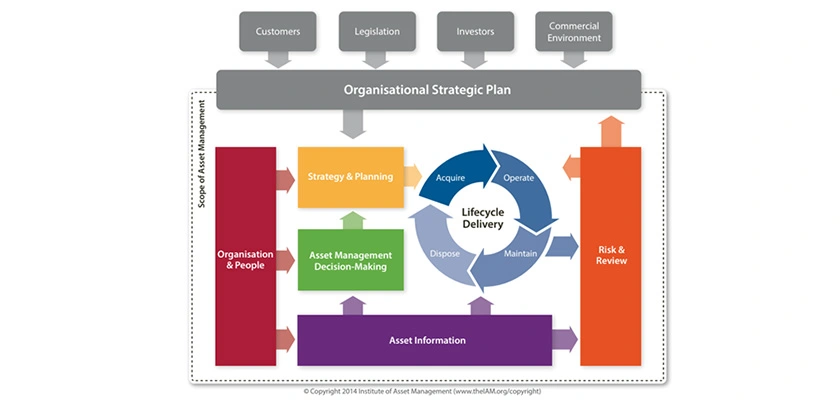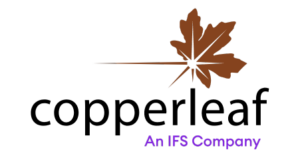Six Key Components of an Asset Management System—And Why it Matters
In a world of aging assets and limited financial and human resources, companies often struggle to decide which projects should get the most attention. The ability to compare and contrast diverse investments and better understand the trade-offs is vital for organizations to make better decisions.
In my previous post, I explored the history of asset management and the importance of defining what “value” means to an organization. Value extends beyond financial goals; most organizations need to deliver more than good financial results. For instance, utilities might be measured based on the speed at which they connect new customers to the electrical grid. Transportation organizations might be measured by their on-time performance. And as the world moves towards a more sustainable and socially-conscious society, many organizations are being measured based on whether they are making progress toward net zero, climate resilience, and Environmental, Social, and Governance (ESG) targets.
This means that for most organizations, the concept of value requires a good understanding of the various stakeholders and what they care about. This knowledge can then be captured in a value framework, which will then drive the decision making and ensure all proposed projects are assessed quantitatively, based on how they contribute to achieving the strategic goals of the organization.
A management system typically translates into a few key documents such as a Policy and a Strategic Plan. The Asset Management Policy outlines the general rules and principles that everybody in the organization must follow in the context of asset management. The Strategic Asset Management Plan (SAMP) provides guidance and direction on what the organization wants to achieve through asset management.
There are many models for asset management systems, and most will adhere to the general principles outlined in ISO 55001. The most popular model is from the Institute of Asset Management (IAM):

It outlines the key components of an asset management system, covering six major subjects:
Strategy and Planning: set the context in which the organization operates, defines the asset management strategy (aligned with the overall company strategy), the various roles in asset management, and the long-term plans (e.g. the SAMP). These elements serve as guidance and direction for the more granular plans required to manage assets in the shorter term.
Asset Management Decision-Making: defines the framework and policies around decision making, to ensure optimal decisions are made at all times and at all levels in the organization. This framework is used to develop the more tactical Asset Management Plans and determine the yearly budgets.
Lifecycle Delivery: covers the practical, day-to-day aspects of managing assets throughout their lifecycle, including resource management, reliability engineering, etc. It ensures that maintainability, operations, and disposal are considered early in the design and build phases, and that the organization engages in continuous improvement.
Asset Information: highlights the need to collect appropriate data, which converts into information and eventually knowledge which guides all decisions and actions. This also points to the need for appropriate IT systems to manage asset information. The goal is to have a “single source of truth” for every element of information.
Organization and People: for many organizations, asset management introduces a new way of thinking and the need for change. This requires strong leadership, a competence framework, and an adjustment of the company culture. In particular, the need for everybody to contribute towards a common goal might be challenging: this introduces the concept of “line of sight” or alignment, where everybody understands what the overall asset management objectives and strategy mean for their personal role and contribution in the company.
Risk and Reviews: one of the most challenging changes for many organizations is the need to define, understand and embrace tolerance for risk. Each organization needs to identify its risks: safety, environmental, reputational, etc. and set its tolerance for such risks. This needs to happen in consultation with stakeholders, and will drive rational, defensible decision making. The organization also needs to develop contingency plans to be prepared for specific risks, and monitor risks over time.
These six subjects are interconnected and form a management system that ensures the organization is well equipped to extract as much value as possible from its assets, while meeting all constraints and targets. Copperleaf’s value-based decision-making methodology helps organizations make improvements in all of these areas. Download this white paper to learn more.
Stay tuned for my next article where we’ll explore the many benefits of asset management.

